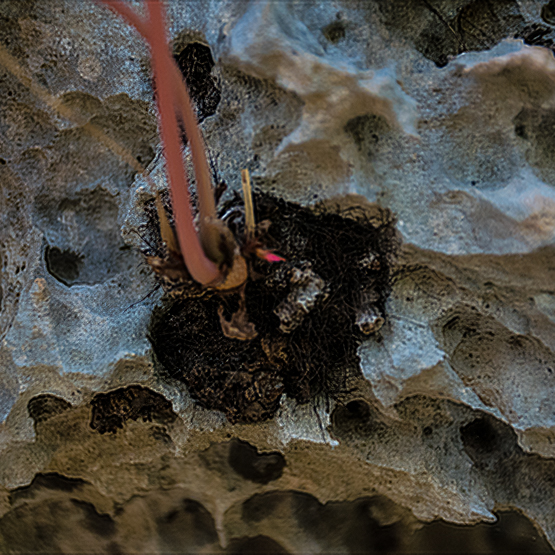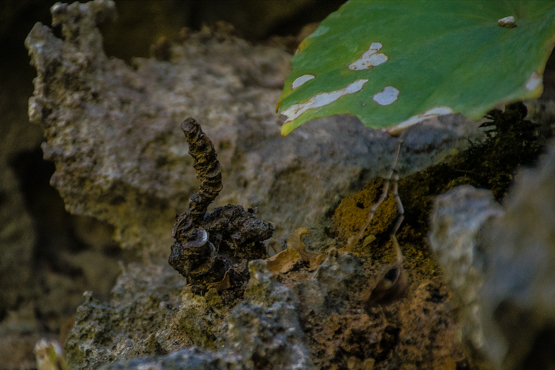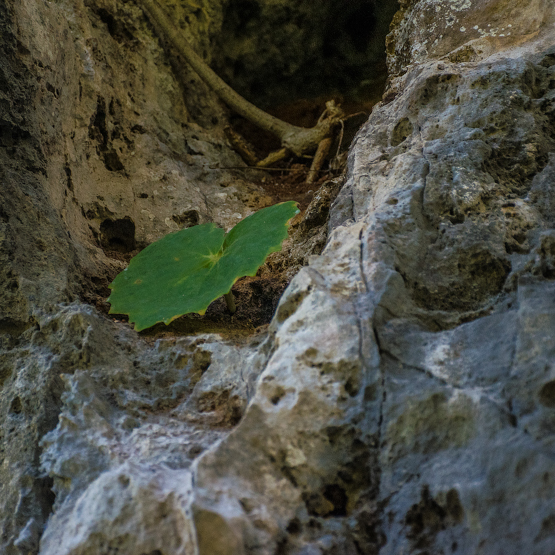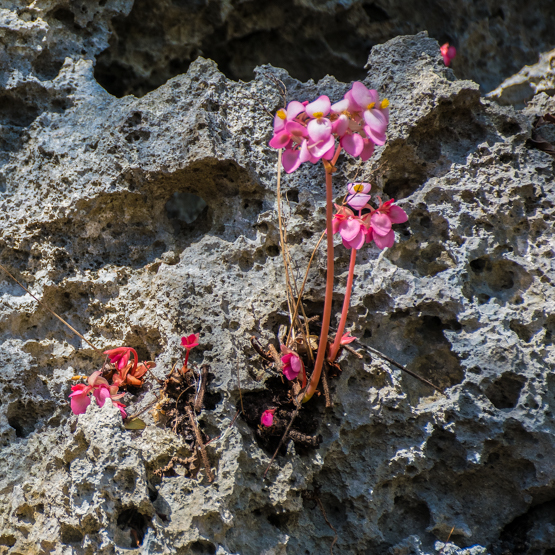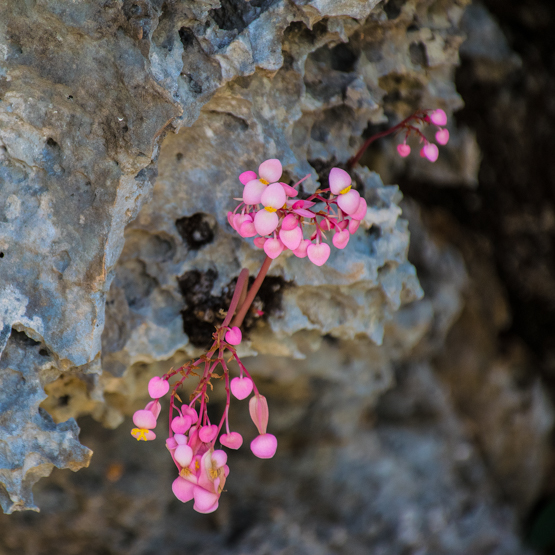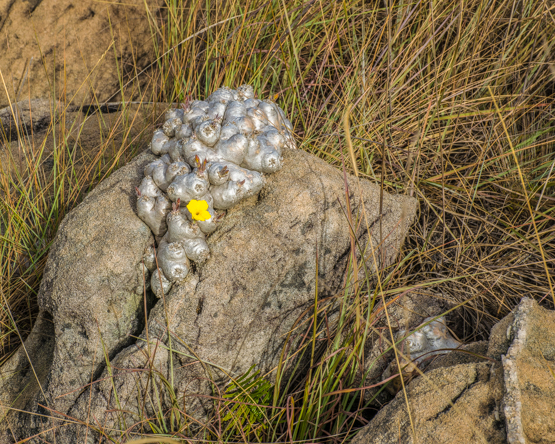
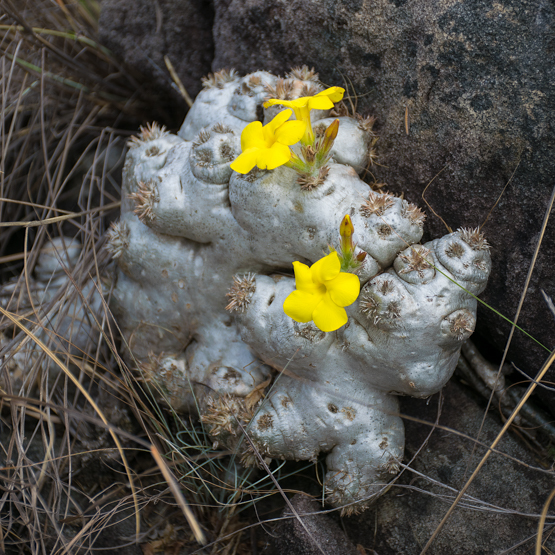
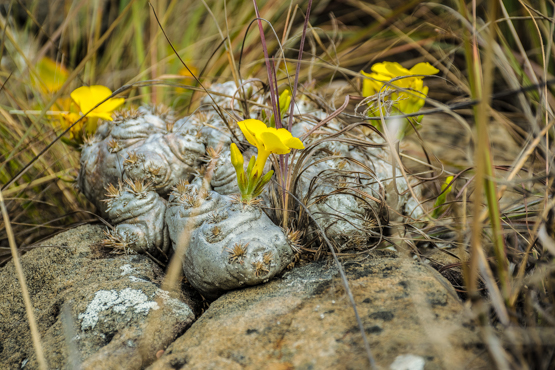
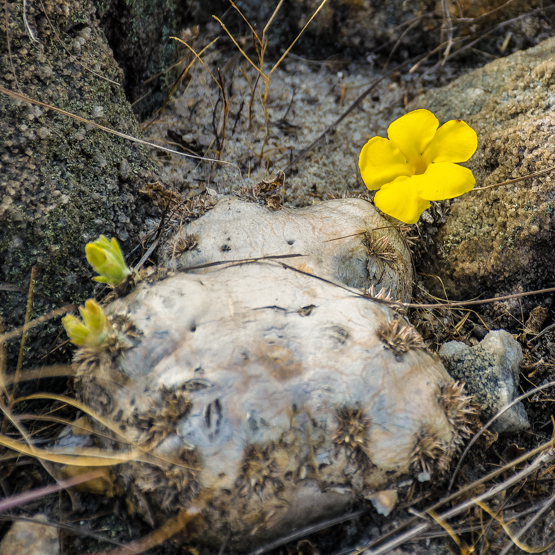
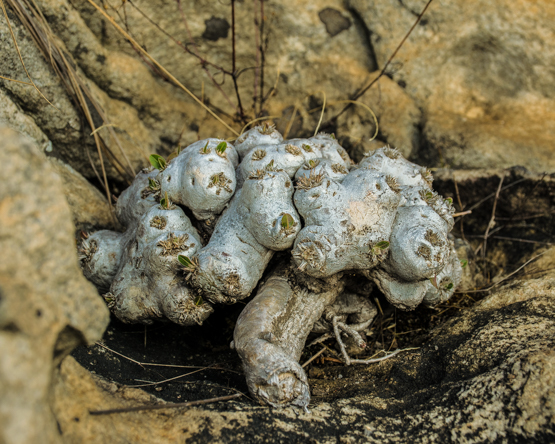





Over time, the plant produces a much-branched, flattened and irregularly shaped caudex up to 1m across and 50 cm high.
Rauh described the species as one of the most curious and remarkable succulents of Madagascar, but in one of his lighter moments also compared old plants to a pile of potatoes. The local people call the plants “wild ginger”.
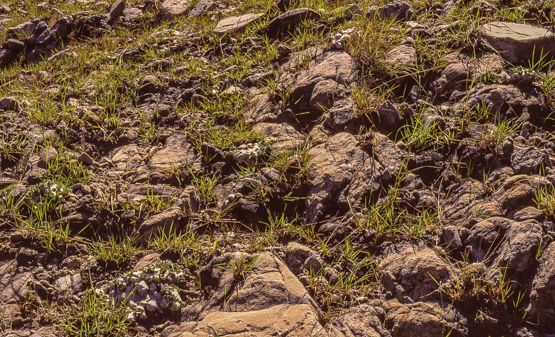
Whatever you compare them to, in the resting state, when there are no leaves or flowers, the plants look like a piece of the quartz which surrounds them in nature (see picture above).
The stems are covered with silvery-grey bark which reflects much radiation and thereby reduces transpiration. This comes in handy in a habitat where on sunny days the surface temperatures may go up to 50-60 ° C (122-140 ° F).
The inflorescences usually bear two (sometimes up to five) yellow, salverform flowers, with or without a short stalk.
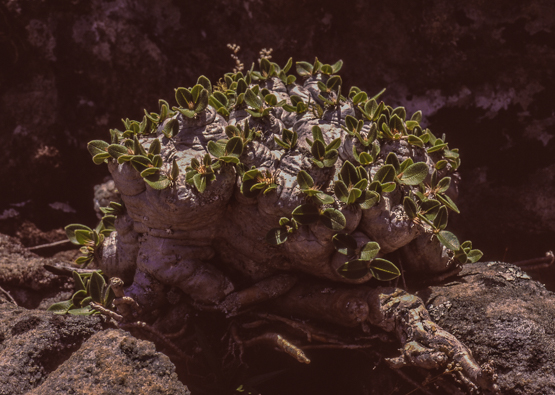
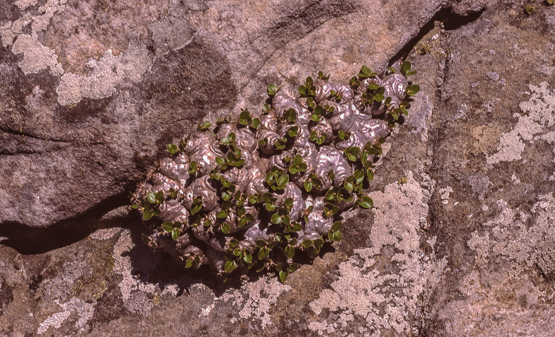
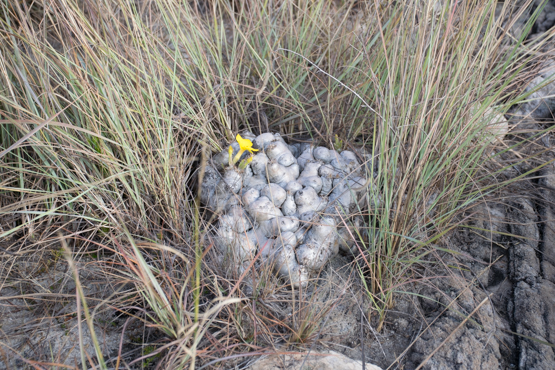

For a little prologue to this post, see the preceding one: Kalanchoe integrifolia).
Although Mt. Ibity is perhaps the most accessible place, P. brevicaule also occurs in a couple of other habitats in Madagascars central highlands.
Plants can be found from Ambositra to Antananarivo in quartz rock at altitudes between 1400 and 1600 m.
In some spots where P. brevicaule grows together with P. densiflorum or P. rosulatum, one can come across hybrids. Judging from the long flower stalks, I suppose the plants shown in pictures # 3 and 4 belong to either of these hybrids.
The first two pictures show views from where P. brevicaule grows on Mt. Ibity. On # 2 you can see the quarry belonging to the massive cement factory nearby.
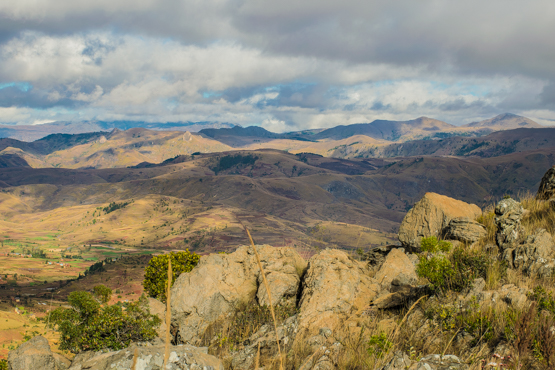

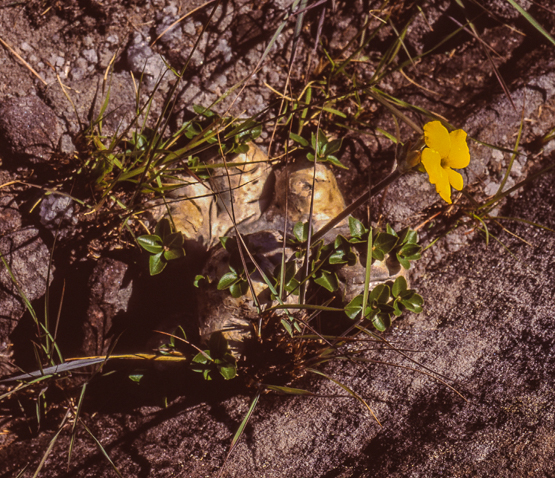
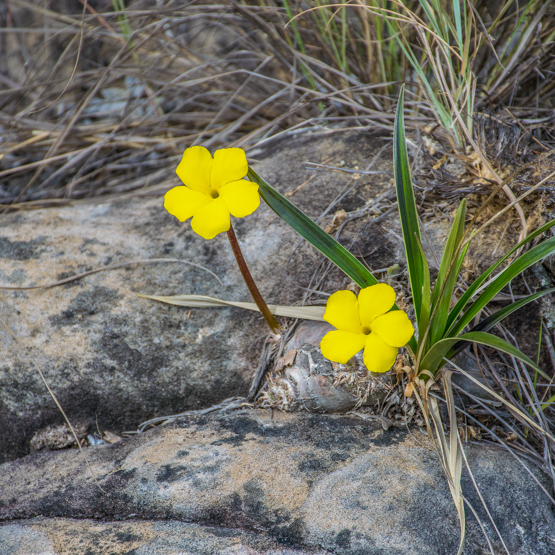
When at the end of my recent trip to Madagascar we had some time left, we decided to go to Antsirabe to visit Mt. Ibity. I had been there 19 years ago to see the famous Pachypodium brevicaule in its habitat and this seemed a good opportunity to renew the acquaintance.
As the area is protected nowadays, it took us a while to find a guide and get the necessary permissions, but in the end we were able to start the ascend.
Just before we arrived at the level were we could expect the Pachypodiums, I noticed a little succulent in a rock crevice. My first thought was: “An Adromischus?”. Well, probably not, as that genus is not known to occur in Madagascar. A bit further up we came across a mature specimen and one look at the flowers confirmed that it was a Kalanchoe. But which one? Fortunately there is a book on the Kalanchoes of Madagascar and that quickly answered the question. (When I looked through slides of my first visit to the country, I found one of the same species photographed further south at a place 15 km West of Ivato; see first picture)
Kalanchoe integrifolia is a polymorphous species which is slow growing and may become very old. It may reach a height of up to 1 m.
The leaves show a great variation in appearance depending on the age of the plants. They are 3-11 cm long and 0.8-2.5 cm wide, egg-shaped in young plants and becoming almost cylindrical as the plants get older.
The flowers may be white, yellowish, pink or dull reddish and are slightly pubescent.
The species occurs in the Antsirabe-Ambositra area on quartz, gneiss and basalt rocks at an altitude of 1200- 2000m. It is rare and probably endangered by environmental
changes.
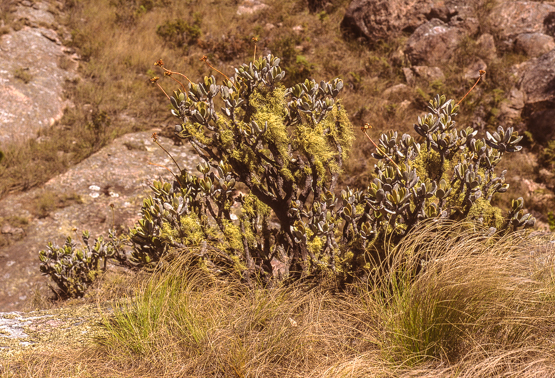
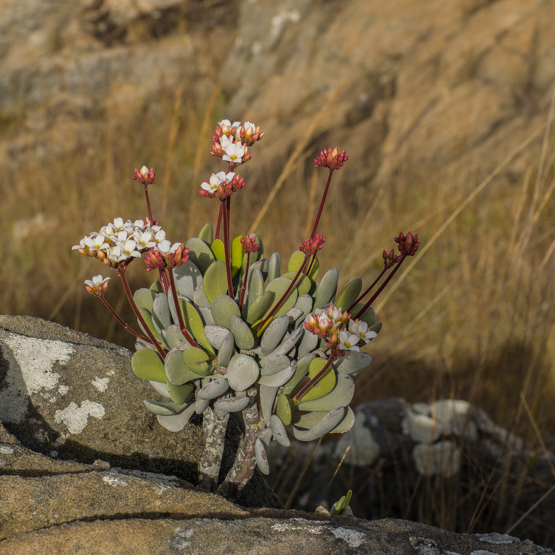
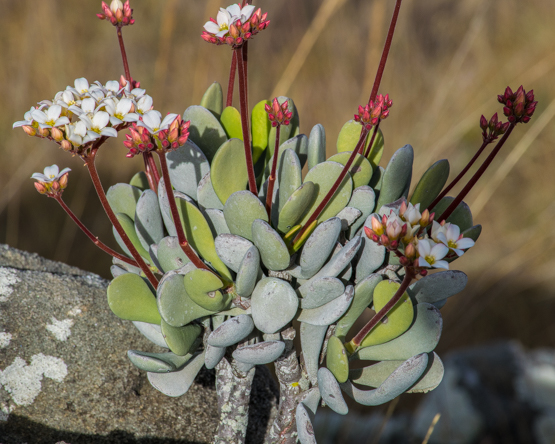

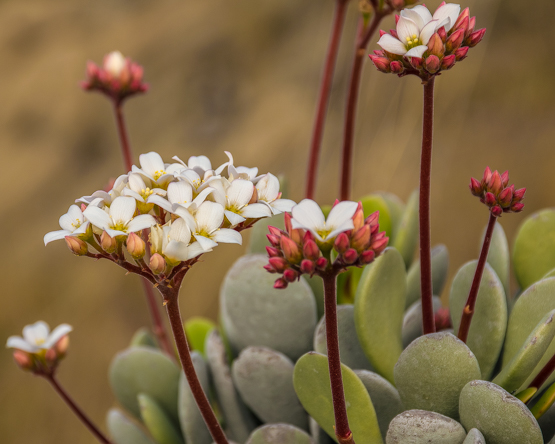
When I was in Madagascar last month, I came across a book called “Baobabs de Madagascar”. Although it was in French, which is not exactly my first language, I decided to buy it on the strength of the excellent photographs. The text is clear and to the point and the description of each species is accompanied by distribution maps and line drawings.
It is not often one comes across a book where the title promises less than the content delivers. This is one of those exceptions: in spite of the title, the two non-Madagascan species (Adansonia digitata from the African continent and A. gibbosa from Australia) are treated the same way as the six ones endemic to Madagascar.
So, all in all I’m very happy with this addition to my library. The only little drawback for me is that an English text is easier to digest than one in French. Therefore I was happy to find out that an English version will be published soon.
The following link will give you more details:
As the name implies, this species is often hiding under other plants or between rocks. For that reason, it is not easy to make good pictures of it. The photographer usually must choose between showing either what the plant looks like or how well it is hidden.
The plants are shrublets with fat (pachycaul) barrel-or flask-shaped stems and thin branches up to 30 cm long. They have soft leaves, which are mainly crowded at the branch tips and are long and narrow: 40-100 mm long and 2-3 mm wide.
The flowers appear from April to October.
One can come across these plant from central Namibia to the Little Karoo on gravelly flats and slopes.
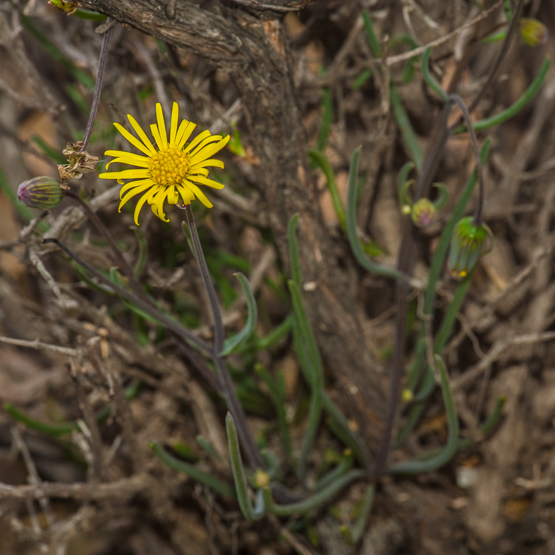
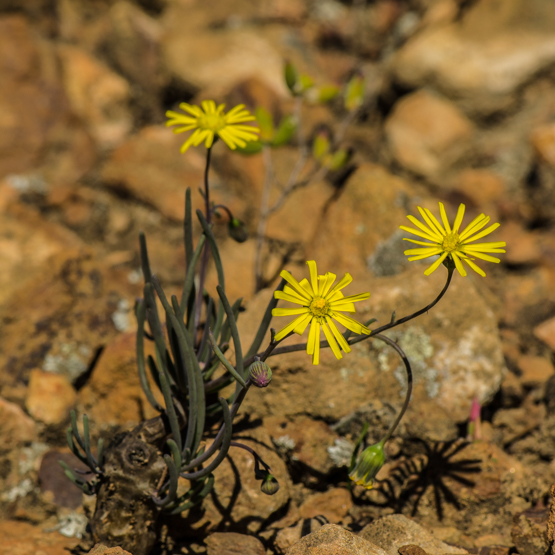
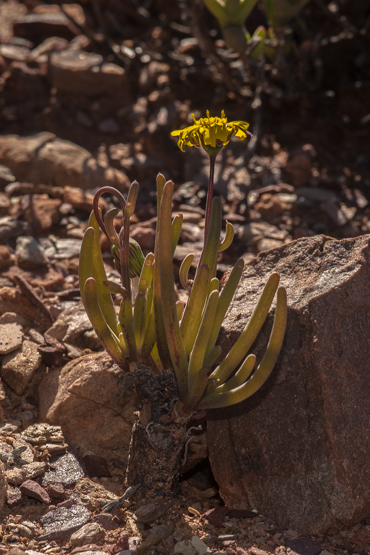
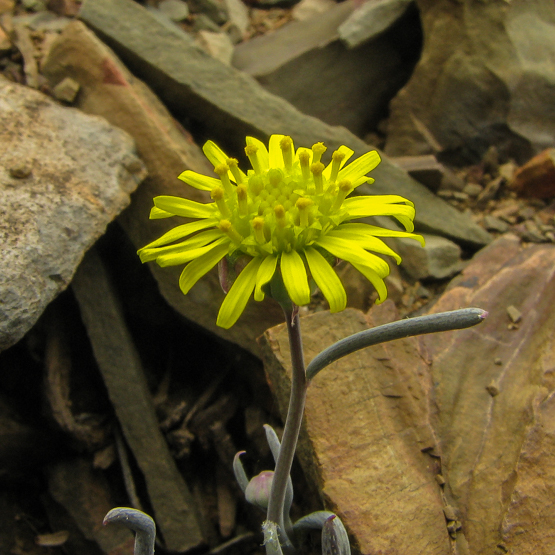
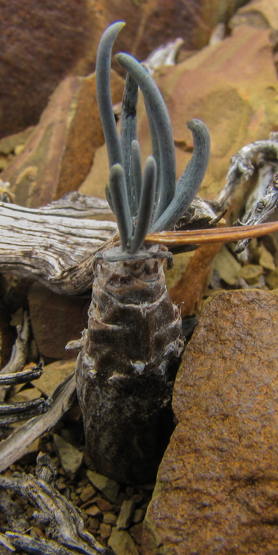
Coming across this species was one of the highlights of my recent trip to northern Madagascar. It was not just the novelty of seeing a Begonia in the wild, but even more so the enormous contrast between the dainty flowers and their harsh and inhospitable surroundings.
This tuberous species is endemic to Madagascar and quite distinct because of its large basal leaves, which are usually solitary in the wild and may become over 60 cm in diameter.
The plants occur in deciduous forests, usually in limestone rock crevices, at altitudes between 100 and 250 m.
Pictures taken at Montagne des Francais near Diego Suarez (Antsiranana) 19 June 2016
